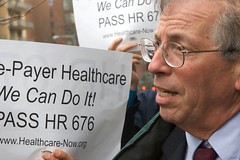Overdrawn at the resource bank is no way to go through life . . .
Every governmental organization that pretends to have the growth-facilitators-called-"planners" on staff should be tasked with doing some actual planning -- coming up with figure that represents the human population carrying capacity for their region, i.e., the number of people who can live there without diminishing the ability of future generations to live there while enjoying the same level of ecosystem services.
Would be an eye-popping exercise.
GROUNDBREAKING STUDY OF EFFECT OF POPULATION GROWTH ON A COMMUNITY'S ECOSYSTEM
POPULATION MEDIA CENTER - "Estimating Impacts of Population Growth on Ecosystem Services for the Community of Albemarle County and Charlottesville, VA," produced by Advocates for Sustainable Albemarle Population, as far is known, is the first such study ever undertaken to examine the effects of a community's projected growth on its ecosystem services, and to suggest projected population sizes at which essential ecosystem services are threatened or impaired.
This research examined the effects of local population increases on a selection of ecosystem services, including water and air related services
Excerpt:
"At a 50% increase in population (pop.186,429) services within the developing sub-study areas (i.e. Charlottesville, Crozet, and the Route 29 corridor) begin to decline markedly. Up to a 125% population increase (pop. 279,642), degradation of ecosystem services is contained within the developing sub-study areas; as population exceeds this threshold degradation becomes widespread, impacting all of the rural areas. It is important to emphasize that ecosystem degradation occurs unevenly across the study area. While ecosystem services at the level of the entire study area appear to be sustainable up to a 125% population increase due to the continued functioning of the rural areas, this masks the degradation that is occurring in the developing areas.
"The results of this . . . study clearly indicate that if growth continues, planners will have to balance the needs of the human population with local ecosystem health. We note that while careful development can continue in the short term, it clearly cannot be sustained forever without sacrificing important ecosystem services.
"There are two main lessons that can be garnered from this research. First, . . . the importance of a development strategy that encourages growth and efficient use of land in the developing areas while preserving the rural areas. This kind of strategy has the best chance of offsetting the impacts of future population growth in the short term. A strong urban forestry program is also important for this approach so that residents in the more densely developed areas can benefit from the ecosystem services provided by trees.
"Second, even with these land use strategies in place, unabated population growth and the accompanying land development will negatively alter ecosystem services across the entire study area, suggesting that the identification and maintenance of an optimal population size should be a goal for local decision makers."
 Image via Wikipedia
Image via Wikipedia
![Reblog this post [with Zemanta]](http://img.zemanta.com/reblog_e.png?x-id=307f2de1-42fa-452a-bbc8-52cf022d8436)

![Reblog this post [with Zemanta]](http://img.zemanta.com/reblog_e.png?x-id=550e530a-d232-4c58-962b-e0aa7f7b92a6)



